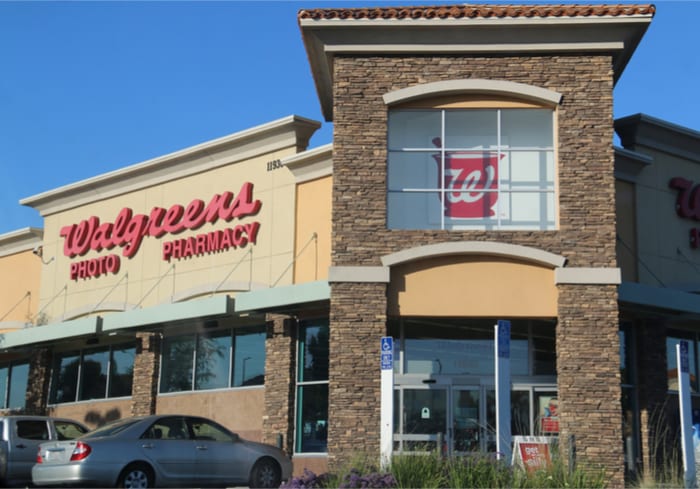Will Medical Services Be Pharmacies’ Secret Weapon?

The U.S. faces a physical shortage today that some are predicting will turn into a crisis over the course of the next decade. According to a report by the Association of American Medical Colleges (AAMC), the country will see a scarcity of 46,000-130,000 physicians by the end of the next decade – and that shortfall won’t be felt equally.
The AAMC noted that primary care will be hit the hardest.
A study from The American Journal of Medicine indicates that market pressures in the industry are pulling doctors away from primary care and into sub-specialties. According to the report, last year the Accreditation Council for Graduate Medical Education (ACGME) approved 4,697 fellowship programs in 123 different subspecialties.
“Although we are now producing more and more specialists, subspecialists and now sub-subspecialists, the number of generalists entering practice will continue to decrease,” the study authors noted.
A falling number of generalists is, of course, a problem for patients. For patients who have a primary care physician (PCP), the odds of dying prematurely decline by 19 percent, and they tend to save 33 percent on healthcare costs over their lifetime. But finding a new PCP can be a lengthy process: The average U.S. wait time for a first appointment is 24 days, the average time spent in a waiting room is 64 minutes and the average drive is 37 minutes. And in some parts of the U.S., the average wait time for a new PCP appointment can be as long as 52 days.
As a result, more and more Americans are abandoning primary care physicians – in fact, 30 percent of Americans report not having one at all. And that figure, according to a Kaiser Family Foundation study, can vary depending on the age of the person. Among millennials, 45 percent report having no primary care doctor.
“These trends are more evident among millennials, but not unique to them. I think people’s expectations have changed. Convenience [is prized] in almost every aspect of our lives,” internist Ateev Mehrotra, an associate professor in the department of healthcare policy at Harvard Medical School, told The Washington Post.
Minute clinics and other walk-in options, he noted, offer a faster experience across the board, as well as instant access to a doctor. Although they sacrifice the proven benefits of a close relationship with a trusted internist, they don’t have the short-term pain of long wait times.
Walgreens’ new partnership with VillageMD in the greater Houston area is an interesting attempt at bridging that gap, offering what the firm aims to be a “best of both worlds” experience for its customers: the longitudinal benefits of a long-term relationship along with a primary care group and the instant accessibility of a walk-in clinic.
VillageMD will operate primary care clinics within five Walgreens stores. The 2,500-square-foot offices will have a separate storefront and a door connecting the two spaces.
Walgreens already has walk-in clinics to treat illnesses like the flu, unexplained rashes and minor injuries. What they are building with VillageMD, however, is not designed as an acute care facility, but rather as a typical PCP experience for annual physicals, wellness checks and longer-term health planning.
“Patients are looking for primary care, and it’s something our system is really in need of,” said Dr. Patrick Carroll, Walgreens’ chief medical officer.
Filling floorspace with an emerging and pressing consumer need is a smart business play for Walgreens, which in recent years has seen its non-pharmacy retail sales stall, and its non-pharmacy foot traffic fall. The retail goods customers aren’t buying are now losing their floorspace to the medical services that studies indicate healthcare consumers are seeking. Walgreens has not yet announced exactly which goods will be on the block.
What the company did talk about is the “really high-quality primary care” that they claim will offer better service at a lower cost. Carroll particularly praised the pharmacy department as the company’s secret weapon, as they are uniquely well-positioned to “work on adherence [to prescription drugs].”
The move comes as one of several in recent years to expand the breadth and depth of Walgreens’ healthcare offerings alongside its core pharmacy offering. The firm also operates senior health centers with Humana, urgent care centers with UnitedHealth Group, dental clinics with Aspen Dental and diagnostic testing with LabCorp, among others.
But the move also comes as others in the pharmacy field are thinking hard about how to make their offerings more competitive by building them more directly around healthcare services. CVS earlier this year launched its HealthHUB concept store, which also aims to reduce retail goods floorspace in order to expand specialized care areas for patients suffering from chronic conditions like diabetes, high blood pressure and asthma, and to create “wellness areas” for diet seminars, yoga classes and sessions with specialists.
Coincidentally, CVS started its healthcare services rollout in Houston, just like Walgreens. Carroll confirmed Walgreens has been eyeing the location, and is now exploring expansion options for the new chain.

